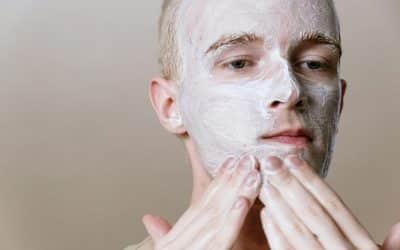Menopause & Your Skin: Decoding the Changes
Perimenopause and menopause are hormonal transition periods in a woman’s life when ovarian function declines, leading to reduced levels of testosterone, progesterone, and oestrogen. These changes can cause fatigue, depression, and low libido, while also triggering a myriad of skin changes, including increased sensitivity and altered texture.
Much like puberty and pregnancy, menopause is a natural physiological process. However, it is often shrouded in pseudoscience, misinformation, and a surge of supplements, medications, and treatments promising miraculous results, many lacking robust scientific evidence to support their efficacy.
Oestrogen production peaks around age 30, and many women won’t notice symptoms of reduced oestrogen during perimenopause (changes in cycle length and flow) until their 40s, about 10 years before menopause (defined as the cessation of menstrual bleeding for one year). With increasing life expectancy, women may spend one-third of their lives post-menopause, managing the lasting impact of declining oestrogen levels on their health, including their skin, which becomes more prone to dryness and thinning.
Oestrogen (a group of hormones – oestradiol, oestriol, and oestrone, collectively referred to as oestrogens) plays a significant role in skin health. While changes in other organs may seem more critical, skin and aesthetic concerns are highly visible. These visible changes, such as fine lines and uneven tone, can affect self-esteem and quality of life, often prompting women to seek targeted skincare solutions.
In the skin, oestrogen binds to specialised receptors and performs several protective and beneficial roles:
- Increases blood flow, ensuring optimal nutrient delivery to skin cells.
- Maintains telomere length, delaying cell ageing and promoting skin rejuvenation.
- Stimulates skin cell proliferation and receptor expression.
- Enhances hyaluronic acid, elastin, and collagen production, improving skin hydration and thickness.
- Inhibits enzymes that break down collagen, preventing premature ageing.
- Acts as an antioxidant, protecting against oxidative stress from sun exposure (reducing rough, dry, wrinkled, and sagging skin).
- Stimulates hair follicles to promote hair growth, helping prevent or reduce female pattern hair loss (androgenetic alopecia).
Beyond appearance, menopause affects skin health and function, leading to several concerns.
Dry, Dull Skin: Reduced hyaluronic acid and sebum production result in lacklustre, dry skin. The skin’s ability to retain moisture diminishes, leading to sensitivity, itchiness, and a weakened skin barrier. Poor circulation contributes to dullness, reduced skin renewal, and a less radiant complexion, often requiring intensive moisturising treatments.
Fragile Skin: Nearly every cell involved in skin repair is influenced by oestrogen. Declining levels impair wound healing, slowing recovery from procedures like RF needling, laser therapy, skin peels, and microdermabrasion. This fragility increases sensitivity to these treatments, necessitating gentler approaches and longer recovery periods to avoid irritation.
Skin Laxity, Wrinkles, and Sagging: Approximately 30% of dermal collagen is lost in the first five post-menopausal years, with an average decline of 2% per year over 15 years. This alters the skin’s mechanical properties, making it thinner, weaker, and less resilient. Collagen loss also triggers degenerative changes in elastic fibres, reducing skin plumpness, exacerbating wrinkle formation, and contributing to facial sagging.
External factors like pollution, smoking, poor diet, lack of sleep, and sun exposure further compromise skin appearance, accelerating laxity and premature ageing.
Topical solutions abound, combining home-care products with in-clinic treatments. Daily use of broad-spectrum sunscreen, retinoids, and peptide-based serums can support skin health. The skin must be in optimal health (internally & externally) before undergoing intensive treatments like RF needling, skin needling, peels, fractional laser, Q-switch YAG, Q-Switch ReGen laser or HIFU (high intensity focused ultrasound). These treatments stimulate cell proliferation, boost collagen and elastin synthesis, improve blood flow, and promote wound healing and repair of sun-damaged skin.
Collaborating with nutritionists, dermatologists, and other integrative practitioners, such as endocrinologists and holistic therapists, alongside doctors and skin therapists, can help navigate the menopausal skin journey. Personalised plans addressing diet, lifestyle, and skincare can optimise outcomes, ensuring healthy, vibrant skin well into post-menopause.




